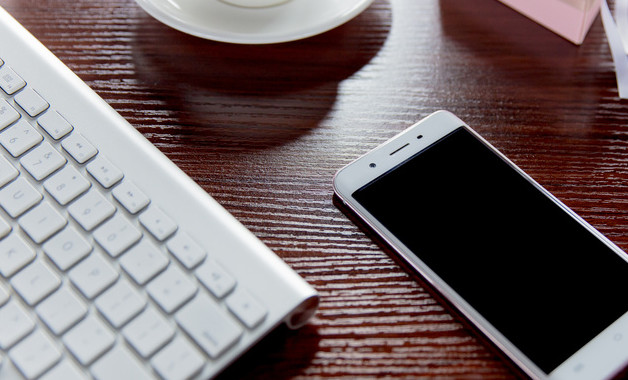- 目录

第1篇 陕西西安大清真寺英文导游词
the great mosque at huajue lane
the mosque is a major spot for religious activities of over 60.000 moslems in xi’an, likewise, an important cultural relic protected by the provincial people’s government. unlike the arabic mosques, with splendid domes, the minarets reaching into the clouds, the coulourful engraved sketches with dazzling patterns, the mosque here in xi’an possesses much chinese traditional touch in both its design and artistic outlook; besides the style peculiar to islamic mosques, this mosque also holds characteristics of chinese pavilions with painted beams and engraved ridgepoles.
however, any further discussion about the mosque will be futile unless anything of the introduction of islam into china is brought up.
islam as a religious order was founded in the early period of the 7th century a.d. and was introduced to china in the mid-600s. at that time, arabian merchants and travelers came to the northwest of china by way of persia and afghanistan and thus established diplomatic, trade, and military contacts with china. in the meantime, another route saw a batch of sea voyagers through bangladesh bay and the malacca strait to china’s guangzhou, quanzhou, huangzhou, yangzhou and other cities where many of them settled down and married the local women who later gave birth to babies who then became moslems.
however, massive immigration of the moslems to china did not take place until as late as the early period of the 13th century, when genghis khan, as a result of his expedition against the west, had conquered vast expanses of land stretching from central asia to eastern europe, including the north of iran. many of the moslems in the conquered areas were thus forced to enlist and later settled in china.
among the enlisted many were soldiers, and some were smiths and officials who were called the hui people in the history books on the yuan dynasty. the hui people later followed kublai khan down to the south, helping him unifying china and then establish the yuan dynasty. in the wake of the conquest, islam spread all over china and mosques began to appear everywhere. in the yuan dynasty, many moslems held positions both in the military and civilian organs of the country. and a lot of the moslems took part in zhu yuanzhang’s uprising in the early 14th century and made great contributions to the founding of the ming dynasty. therefore, all the emperors of the dynasty issued mandates to protect islam, and to set up mosques in praise of the moslems for their feats. in the early 16th century, islam predominated qinghai on the minority nationalities including the huis, the uygurs, the kazaks, the kirgizes, the tajiks, the tartars, the ozbeks, the dong xiangs, the salars and the bonans. the moslems in xi’an are mainly the huis, being a small portion out of the ten million in china.
the mosque at hua jue lane is the largest in xi’an, and at the same time, it is also one of the earliest built on a comparatively large scale, and well preserved mosques in china.
according to “the stele on the building of the mosque”, the mosque is said to be built in the tang dynasty. however, the architectural style of the mosque suggests a possible building dating back to the ming dynasty. the four courtyards of the mosque cover an area of more than 12,000 square meters, out of which about 4,000 are occupied by various structures. the still intact wooden front memorial gateway of the front yard, built at the turn of the 17th century, with glazed tiles on the top, spectacular corners and upturned eaves, is about 9 metres high, and has a history of about 360 years. the stone memorial gateway in the center of the second courtyard is flanked with a tail stele on either side with dragons carved on each, recording the repair work ever since the building of the mosque. on the back of one of the steles are engraved characters by the master calligrapher mi fu, “may buddhism fill the universe”, on the other, “royal -bestowed”by dong qichang, another master of the same art of the ming dynasty. they are treasures in chinese calligraphy. at the entrance of the third courtyard is an imperial built hall, where a “month tablet”, showing the calculation of the hui calendars in arabic, is stored. it was compiled by a man in charge of the mosque called xiao mining in the early period of the qing dynasty. a three –storeyed octagonal wooden structure called “retrospection tower”also stands in the center of the courtyard, which has the same function as the minaret in islamic temples in arabic countries, and which is a place from where orders were sent to call the moslems to come to worship. respectively, on the south and north wings of the tower, are a reception chamber and a scripture chamber, both elegantly laid out. the five wooden houses, which are called “water houses”in the southwest section of the mosque are the place where the believers bathe themselves before they attend their services. and in side the fourth courtyard there is a structure called “the pavilion of phoenix”, a place where the worshipers used to wait for the services. the pavilion, in fact, is a compound structure of three small buildings. the six-gabled structure of the central part, adjoining the two three-gabled buildings on each side looks very much like a flying phoenix, and hence its name. just at the back of the pavilion, there is a fishpond, beyond which is a platform occupying an area as large as 700 m2. across both ends of the platform stands the 1,300 square metered service hall, holding over a thousand worshipers at once. there are over six hundred sunk panels well as the sunk panels, are decorated with patterns of painted trailing plants and arabic letterings. the imam leads his group of worshipers, while facing in the direction of mecca, to chant in koran and to pay their religious homage.
the moslems in china share very much the same customs with their brothers and sisters elsewhere in the world. they worship five times a day: at dawn, at noon, in the afternoon, at dusk, and at night. female worshipers attend their services in a separated place from their brothers, usually at home. moslems pay special attention to their health and see that they always wear clean clothes. they are teetotalers not only of wine, but also of pork and animal blood for in koran pigs have been mentioned four times as being “unclean”. according to koran, a man can have four wives and women should wear veils when they go out. however, except a few places in xinjiang, the chinese practise monogamy and women are veiless when they go out. upon his death, a moslem has to be “thoroughly cleaned”(thoroughly bathed), has to be put on “ke fan”(to be shrouded with a piece of white cloth) and has to be buried coffinless in the ground, with an imam reciting scriptures at the funeral.
the chinese constitution promulgates that freedom of religion of each citizen and freedom of preserving or reforming local customs for every nationality are permitted. and of course, the moslems in china enjoy equal rights with peoples of other nationalities and their religious beliefs and customs are respected everywhere in the countr
第2篇 西安七大清真寺导游词
篇1:化觉巷清真大寺
清真大寺位于西安鼓楼西北的化觉巷内,又称化觉巷清真大寺,它与西安大进修巷清真大寺并称为中国西安最迂腐的两座清真大寺,因其在大进修巷寺以东,故又叫东大寺。
清真大寺是一座汗青久长,局限弘大的中国宫殿式古构筑群,是伊斯兰文化和中国文化相融合的结晶。该寺院始建于唐天宝元年(公元742年)历经宋,元,明,清各代的维修掩护,成为今朝的名堂。该寺属陕西省重点文物掩护单元,1988年又提拔为世界第三批重点文物掩护单元,1997年5月被评为西安市旅游十大景观之一。
全寺总面积1.3万平方米,寺院内有建于17世纪初高达9米的木布局大牌楼,牌楼琉璃瓦顶,异角飞檐,精缕细雕;对象走向成正方形,共分为四进院。殿内有石碑七通,碑文有阿拉伯文、波斯文和华文。第二进院内有宋代大书法家米芾和明代大书法家董其昌的书法真迹。第四进院内有面积约1300平方米的殿堂,可容纳千余人做星期,殿内有壁画400余幅,书以阿拉伯文图案,构图各具千秋。
清真大寺的构筑情势、基调一派中百姓族气魄威风凛凛,然而,寺院内的统统部署又严酷凭证伊斯兰教制度,殿内的镌刻藻饰、蔓草斑纹装饰都由阿拉伯文套雕构成,中国传统构筑和伊斯兰构筑艺术气魄威风凛凛云云调和地团结,令人惊叹,因而被连系国教科文组织列为天下伊斯兰文物之一。
篇2:西安大皮院清真寺
西安大皮院清真寺始建于明永乐九年(1411年),由马道真老师购地兴建。1959年被占作他用,致使年久失修,大殿、南北亭坍毁。1985年党的民族宗教政策获得进一步的贯彻落实,由内地教民捐资,在学董白志清的率领下,颠末5年的全力,不单规复了清真寺的原貌,并且新修了石刻围栏、牌杭、满拉楼、虎国拜楼等办法。
现占地面积共约5亩,构筑总面积1610平方米,星期大殿构筑面积354平方米,为中国古典式构筑气魄威风凛凛。寺院周围树木参天,花卉披拂,情形整洁清幽。为内地回族穆斯林群众从事宗教勾当的圣洁场合。
寺内保藏有阿拉伯文经典51本,明宣德铜香炉1个。本坊觐朝哈吉有马迎春、陈寿令、童仲景、苏吉祥、孙培恒、李本元、马振番、贾永信、赵明州等。
篇3:西安小皮院清真寺
西安小皮院清真寺位于古城西安市中心的小皮院巷内,东邻市当局大院(亦是明清陕西巡抚衙门地址地)。它以久长的汗青和为穆斯林作育出大批有成绩的宗解说者而著称于世,并受到国表里人士的存眷。至今,每逢星期时,八方信众来此星期祷告,朗朗诵经声一直于耳,宗教糊口情况如同昔时。
据寺内原碑(已毁)和现存碑文记实,小皮院清真寺原名“真教寺”、“万寿寺”,又因其在化觉巷清真大寺(也叫东大寺)以北,且局限较大,亦称“北大寺'。据传,该寺兴建于唐末,宋徽宗(大观)丁亥年(1107年),真教寺为长安京兆四坊旧有“清真寺”,是西安伊斯兰教最早构筑之一。
该寺敕建于元仁宗皇庆元年即公元1312年。据明太祖朱元璋洪武元年(1368年)岁次正月敕匾该寺(百字赞)和明万历三十九年至四十二年(1611—1614年)间重修寺碑记曰:“‘天方之一脉,肇于唐初,盛于大元,皇庆(仁宗)年间,以迄于今,历千余载。’为进士马士骐撰,其新野回回人也”(见马以愚《中国回教史鉴》100页)。
二十世纪三十年月末,该寺曾遭侵华日寇飞机的轰炸,所幸炸弹为哑弹,大殿才免遭恶运。在上世纪六、七十年月的“十年大难”中,寺毁殆尽,寺内历代牌匾30多面被毁,仅剩星期殿孑然危立。小皮院清真寺的牌匾在大殿立柱下有明太祖御制至圣“百字赞”的木质牌匾一幅,山门正中门楣和一进院二门内后檐上别离悬挂明礼部侍郎董其昌题写的“开天古教”匾和“敕赐星期寺”匾,北厅房檐下悬挂清嘉庆年云贵总督僧学谦题写的“六来堂”匾,大殿门内上方悬挂“钦若吴天”牌匾,大殿门内北侧上方悬挂“临下有慑”匾,大殿檐下悬挂“道贯古今”、“三畏四毋”匾,均由秦陇复汉军戎马总都督张云山题写。清光绪26年,庚子之役,慈禧与光绪从北京逃至西安,次年返京前为西安小皮院清真寺等挥笔题匾,河南导游词,慈禧手书“派衍天方”,光绪天子手书“教崇西域”,大殿中阁门上悬挂慈禧手书龙头“福”字匾。大殿左檐下悬挂民国29年百姓当局行政院副院长白崇禧题写的“兴教开国”匾。
1980年往后,跟着国度民族宗教政策的落实,寺院回到坊民手中,1990年,大殿被列为省级重点文物掩护单元。依据《中华人民共和国文物掩护法》“掩护文物,大家有责”的原则。为了使祖先遗留下来的这一贵重遗产不在我们这一代人中毁掉,经寺管会研究抉择,按照现残存构筑,全面恢复兴有面孔。在当局有关部分大力大举帮忙下,宽大坊民慷慨解囊筹措资金,为修复寺院做出了不懈全力。从八十年月中期开始,历时近二十年,终于使迂腐的清真寺面目一新,重放色泽。
篇4:西安洒金桥清真古寺
西安洒金桥清真古寺,亦称清真北寺,其构筑年月长远,汗青悠长,相传元明时期已存,距今已六、七百年之久。世代以来,聚居于洒金桥、大麦市街、新寺巷、香米园、东举院、庙后街等街坊的回族穆斯林群众依寺而居、依坊而商地糊口在这片热土上。
在抗日战争时期,当东瀛鬼子军国主义的铁蹄践踏中国大地的时辰,古寺这一圣洁之地也未能幸免,竟然惨遭日寇飞机蛮横轰炸。1940年4月30日,两枚炸弹别离落到大门内天井(古槐之西约两米处)和大殿上殿南墙处,所幸两弹均是“臭弹”,没有爆炸,未造成职员伤亡。但因为激烈的攻击力和庞大的震动,致上殿半毁,后殿移位。东瀛鬼子降服信服后,经坊民出资着力,并多方捐献,大殿才得以规复。穆斯林群众对日寇的这一暴行悔恨至极,世代难忘。
篇5:西安大进修巷清真寺
安市大进修巷清真寺位于西安市西大街大进修巷内北侧,与化觉巷清真寺对象遥遥相对。该寺构筑局限较大,仅次于东侧的化觉巷清真大寺,故又称西大寺。
据寺内现存石碑记实,该寺建设于唐中宗乙巳年(公元705年)。赐名清教寺,玄宗朝更名唐明寺,元中统间赐名回四万善寺,及明洪武时赐名清真寺。是西安最迂腐的清真寺之一。元至明末,经赛典赤、铁铉、郑和等人屡次重修扩建。明永乐、天启及清代均有碑纪其事,解放后迄今当局曾两次拨款维修。楼、台、亭殿机关肃静肃穆,外面则迂腐而显敞亮,布局壮观而紧凑,内观则平均调和,碑、雕、画多系有数。
这座清真寺占地9.1亩,总构筑面积270o平方米,由照壁、石坊(上有“政建陆次”字样)、大门、三间庭、省心阁、南北厅、碑亭、阿訇斋、洗浴室,星期正殿等构筑群构成。相传,省心阁建于宋代,明朝郑和四下西洋返来后重修清真寺时复修,后经多次修葺,仍保持原貌至今。
省心阁为四角形楼式构筑,三层三重檐,机关肃静古雅,现经彩绘,映翠飞丹,玲珑烂漫,为寺内首要构筑之一。正殿前为。一广大月台,周围环以石栏。石栏前一阁下各立一碑亭,南碑亭内是闻名的。“郑和碑”,即《重修清净寺碑》。正殿门首悬挂慈*禧手书“派衍天方”的牌匾。殿内后中为窑殿。上方写有《古兰经》原文,系“土耳其”体书法,笔势苍劲,线条流通。右边是阿訇宣讲台。大殿面积约为600平方米,可容纳500多人同时作星期。大殿四壁饰有花一图案,套刻着古兰经和阿拉伯文的“嘟哇”,这些沥粉贴金壁板为海内合一老清真寺现存之佳构,具有极高的艺术代价。清真寺的整个机关以个中前合壁的构筑伎俩,浮现出伊斯兰教份真寺在中国的早期构筑气魄威风凛凛。
此寺1956年被列为陕西省文物掩护单元。
篇6:小进修巷清真营里寺
营里清真寺,顾名思义就是“兵营中的清真寺”。对付营里清真寺最早记实是在唐代,唐代宗年间随郭子仪逍遥安史之乱侨居长安的一些阿拉伯或波斯官兵就被安放在进修巷,并且他们的兵营就驻扎在巷内,为了利便这些外籍武士的宗教勾当成立了一座专供官兵行使的清真寺,因为该寺在虎帐地区内因此取名“营里清真寺”。
但此刻较量风行的说法是元代回回军驻在了长安,元当局专门为驻扎在虎帐里的穆斯林官兵制作的清真寺,可是否建于元代待考。有据可查的年月应该是山门楼上牌匾标出的清乾隆甲午年间建制年月,其时这里驻扎的部队中多为穆斯林官兵。为利便宗教糊口而制作的此寺,至今小进修巷向北段仍有一条笔挺的狭小小巷,据传是其时兵营中的军械库为利便输送箭支而开发的专用通道,俗称“箭道”。
小进修巷是条幽静幽深的小巷,营里清真寺就在巷子深处,由于地处荒僻之所,和小皮院清真寺一样很少为外人所存眷。固然营里寺前院也是个关闭小院,但因为附近被种种民居楼房所困绕,因此无法在北侧开门,只亏得西北角面东开立大门楼。和大皮院清真寺相同,营里寺更像是小皮院清真北大寺的迷你版,寺院中央也是一条石砌长廊,不外比小皮院寺短许多,上面缠绕开花卉想必夏季坐在长廊下异常风凉,尚有山门楼两侧的玉轮门以及月台上三连石牌楼门。
景区地点:陕西省西安市莲湖区小进修巷86号
搭车线路:西安市内可乘4、7、15、23、31、43、45、201、205、206、215、221、222、252、300、302、604、611、612、k630国都隍庙站下车,向前50米,进大进修巷,大进修巷四面有许多蹦蹦车,可坐车前去。
篇7:北广济街清真寺
西安北广济街清真寺位于莲湖区北广济街南端东侧83号,俗称小寺。相传建设于明代晚期(公元1600年前后),地处广济坊,邻近化觉巷清真大寺俗称“清真小寺”坊民嬉称大寺的“哨门”。清乾隆33年(公元1769年)从头翻建了寺院首要构筑。北广济街清真寺原占地面积2000平方米,构筑面积不敷1000平方米。
进寺院的大门、二门正方的“清真寺”匾额为清代名家宋伯鲁和当代榜书家石宪章题书。整个寺院构筑特色是,寺小充实操作台阶来表现大殿的肃穆肃静。内部以镌刻精细取胜,各类构筑的浑朴色彩、砖雕、石雕、木雕的过细优良,为迂腐的寺院增加了隐秘的色彩和文化咀嚼。北广济街清真寺是一座具有中百姓族特色的伊斯兰教寺院。
尊重清真寺有如下十七种示意:
1、进入清真寺见到人先说赛俩目,没人答复时,就说:“安赛俩目,阿来一拿,命染必拿,外尔俩,尔巴丁俩信洒力嘿乃”。
2、跪之前先礼两拜“道贺清真寺的乃麻子”在坐下。
3、不在清真寺里做交易。
4、寺里不带武皿。
5、不要在殿内大叫,探求失物。
6、不升大声音。
7、不说现代的任何话。
8、不要超过别人脖子,挤进前班。
9、不要和别人争位子。
10、不要拥挤班子中任何人。
11、不要在星期人眼前颠末。
12、不吐唾沫。
13、不在殿内拉指节。
14、不把易燃品带入大殿。
15、破除污物,劝阻疯汉、顽童。
16、不在星期殿内执行法度。
17、多念记主词,仔细不大意。
交通指南
景区地点:陕西省西安市莲湖区北广济街83号
搭车线路:西安市内可乘4、7、15、23、31、32、43、45、201、201、205、206、215、218、221、222、251、252、300、302、604、611、612、k630、游8等路公交在广济街下车。
看过'西安七大清真寺导游词 '的还看了:
1.化觉巷清真大寺导游词
2.关于西安的导游词
3.有关西安的导游词
4.西安旅游导游词
第3篇 西安大清真寺导游词
清真大寺位于西安市鼓楼街北隅的化觉巷内。因为它与大进修巷的清真寺对象遥遥相望,并且局限较大,故又被称为东大寺或清真大寺,为世界重点文物掩护单元。
据寺内现存石碑记实,清真大寺建成唐玄宗李隆基天宝元年(742年),距今已有1250多年的汗青。经宋、元、明、清屡次重修和护建,慢慢形陈局限弘大,楼台、亭殿机关紧凑调和,肃静肃穆的构筑群。清真寺前后分四个院落,占地面积13000多平方米,构筑面积5000多平方米。前院紧临照壁的木牌坊,高约9米,琉璃瓦顶,挑角飞檐,雕梁画栋,极为壮观。南北双方为仿古构筑的迎接室。
第二院是悬挂“清真寺”匾额的五间楼。院内树木成荫,花园对称分列,石制牌楼耸立其间,碑阴雕刻有闻名书法家米芾、董其昌的题字。
第三院是敕赐殿,院中央是三层布局优良的八角形省心楼。南北两厢是经堂、宫殿,内里珍藏有阿拉伯文和华文翻译的《古兰经》及贵重书画等。
第四院中心是一真亭,又名凤凰亭,南北各有面宽七间的厅房。南厅后有石碑廊,陈列着建设和重修清真寺的碑刻。
一真亭后有海棠形鱼池喷泉,亭南北各有一座碑亭。进石门,走上辽阔的大月台,大殿就在正端。大殿面阔7间,进深9间,面积约1300平方米,可容纳千余人同时作星期。殿内天棚藻井,有画600余幅,彩绘图案纷歧,墙壁刻蔓草斑纹,套刻古兰经,构图着色,均示意中国伊斯兰教寺院构筑和宗教彩画的特色。
西安大清真寺导游词
第4篇 西安大清真寺英文导游词
the mosque is a major spot for religious activities of over 60.000 moslems in xi’an, likewise, an important cultural relic protected by the provincial people’s government. unlike the arabic mosques, with splendid domes, the minarets reaching into the clouds, the coulourful engraved sketches with dazzling patterns, the mosque here in xi’an possesses much chinese traditional touch in both its design and artistic outlook; besides the style peculiar to islamic mosques, this mosque also holds characteristics of chinese pavilions with painted beams and engraved ridgepoles.
however, any further discussion about the mosque will be futile unless anything of the introduction of islam into china is brought up.
islam as a religious order was founded in the early period of the 7th century a.d. and was introduced to china in the mid-600s. at that time, arabian merchants and travelers came to the northwest of china by way of persia and afghanistan and thus established diplomatic, trade, and military contacts with china. in the meantime, another route saw a batch of sea voyagers through bangladesh bay and the malacca strait to china’s guangzhou, quanzhou, huangzhou, yangzhou and other cities where many of them settled down and married the local women who later gave birth to babies who then became moslems.
however, massive immigration of the moslems to china did not take place until as late as the early period of the 13th century, when genghis khan, as a result of his expedition against the west, had conquered vast expanses of land stretching from central asia to eastern europe, including the north of iran. many of the moslems in the conquered areas were thus forced to enlist and later settled in china.
among the enlisted many were soldiers, and some were smiths and officials who were called the hui people in the history books on the yuan dynasty. the hui people later followed kublai khan down to the south, helping him unifying china and then establish the yuan dynasty. in the wake of the conquest, islam spread all over china and mosques began to appear everywhere. in the yuan dynasty, many moslems held positions both in the military and civilian organs of the country. and a lot of the moslems took part in zhu yuanzhang’s uprising in the early 14th century and made great contributions to the founding of the ming dynasty. therefore, all the emperors of the dynasty issued mandates to protect islam, and to set up mosques in praise of the moslems for their feats. in the early 16th century, islam predominated qinghai on the minority nationalities including the huis, the uygurs, the kazaks, the kirgizes, the tajiks, the tartars, the ozbeks, the dong xiangs, the salars and the bonans. the moslems in xi’an are mainly the huis, being a small portion out of the ten million in china.
the mosque at hua jue lane is the largest in xi’an, and at the same time, it is also one of the earliest built on a comparatively large scale, and well preserved mosques in china.
according to “the stele on the building of the mosque”, the mosque is said to be built in the tang dynasty. however, the architectural style of the mosque suggests a possible building dating back to the ming dynasty. the four courtyards of the mosque cover an area of more than 12,000 square meters, out of which about 4,000 are occupied by various structures. the still intact wooden front memorial gateway of the front yard, built at the turn of the 17th century, with glazed tiles on the top, spectacular corners and upturned eaves, is about 9 metres high, and has a history of about 360 years. the stone memorial gateway in the center of the second courtyard is flanked with a tail stele on either side with dragons carved on each, recording the repair work ever since the building of the mosque. on the back of one of the steles are engraved characters by the master calligrapher mi fu, “may buddhism fill the universe”, on the other, “royal -bestowed”by dong qichang, another master of the same art of the ming dynasty. they are treasures in chinese calligraphy. at the entrance of the third courtyard is an imperial built hall, where a “month tablet”, showing the calculation of the hui calendars in arabic, is stored. it was compiled by a man in charge of the mosque called xiao mining in the early period of the qing dynasty. a three –storeyed octagonal wooden structure called “retrospection tower”also stands in the center of the courtyard, which has the same function as the minaret in islamic temples in arabic countries, and which is a place from where orders were sent to call the moslems to come to worship. respectively, on the south and north wings of the tower, are a reception chamber and a scripture chamber, both elegantly laid out. the five wooden houses, which are called “water houses”in the southwest section of the mosque are the place where the believers bathe themselves before they attend their services. and in side the fourth courtyard there is a structure called “the pavilion of phoenix”, a place where the worshipers used to wait for the services. the pavilion, in fact, is a compound structure of three small buildings. the six-gabled structure of the central part, adjoining the two three-gabled buildings on each side looks very much like a flying phoenix, and hence its name. just at the back of the pavilion, there is a fishpond, beyond which is a platform occupying an area as large as 700 m2. across both ends of the platform stands the 1,300 square metered service hall, holding over a thousand worshipers at once. there are over six hundred sunk panels well as the sunk panels, are decorated with patterns of painted trailing plants and arabic letterings. the imam leads his group of worshipers, while facing in the direction of mecca, to chant in koran and to pay their religious homage.
the moslems in china share very much the same customs with their brothers and sisters elsewhere in the world. they worship five times a day: at dawn, at noon, in the afternoon, at dusk, and at night. female worshipers attend their services in a separated place from their brothers, usually at home. moslems pay special attention to their health and see that they always wear clean clothes. they are teetotalers not only of wine, but also of pork and animal blood for in koran pigs have been mentioned four times as being “unclean”. according to koran, a man can have four wives and women should wear veils when they go out. however, except a few places in xinjiang, the chinese practise monogamy and women are veiless when they go out. upon his death, a moslem has to be “thoroughly cleaned”(thoroughly bathed), has to be put on “ke fan”(to be shrouded with a piece of white cloth) and has to be buried coffinless in the ground, with an imam reciting scriptures at the funeral.
the chinese constitution promulgates that freedom of religion of each citizen and freedom of preserving or reforming local customs for every nationality are permitted. and of course, the moslems in china enjoy equal rights with peoples of other nationalities and their religious beliefs and customs are respected everywhere in the country.










